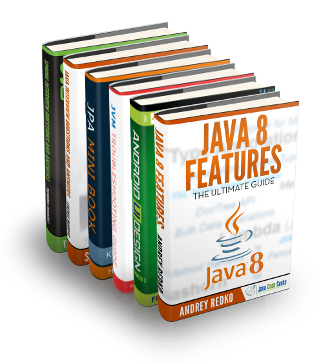Core Java
Java Firebase Cloud Functions: Serverless Backend Guide
Firebase Cloud Functions now supports Java 11 runtime, enabling developers to build robust serverless backends using familiar Java tooling. This guide walks through creating, deploying, and optimizing Java functions for:
- Real-time Database triggers
- Authentication event handlers
- HTTP endpoints
- Scheduled tasks
1. Setting Up Your Environment
Prerequisites
- Firebase CLI (
npm install -g firebase-tools) - Java 11+ JDK
- Google Cloud account
1 2 3 4 | # Initialize Firebase projectfirebase loginfirebase init functions# Select Java as runtime |
Project Structure
1 2 3 4 5 6 | /my-project /functions src/main/java/com/example/ └── Main.java # Entry point build.gradle # Dependencies .env.yaml # Environment variables |
2. Core Function Types
A. Realtime Database Triggers
Process changes to Firebase’s NoSQL database:
01 02 03 04 05 06 07 08 09 10 11 | import com.google.cloud.functions.*;import com.google.firebase.database.*;public class UserCounter implements BackgroundFunction<FirebaseEvent> { @Override public void accept(FirebaseEvent event, Context context) { DataSnapshot snapshot = event.getData(); long count = snapshot.child("users").getChildrenCount(); System.out.println("Total users: " + count); }} |
Deployment:
1 | firebase deploy --only functions:userCounter |
B. Authentication Event Handlers
Respond to user sign-ups/logins:
1 2 3 4 5 6 7 | public class WelcomeEmail implements BackgroundFunction<AuthEvent> { @Override public void accept(AuthEvent event, Context context) { UserRecord user = event.getData(); sendEmail(user.getEmail(), "Welcome to our app!"); }} |
C. HTTP Endpoints
Create REST APIs:
1 2 3 4 5 6 7 | public class ApiFunction implements HttpFunction { @Override public void service(HttpRequest request, HttpResponse response) throws IOException { response.getWriter().write("Hello " + request.getQueryParameters().get("name")); }} |
3. Advanced Patterns
Dependency Injection with Spring
01 02 03 04 05 06 07 08 09 10 11 12 | @Beanpublic FirebaseDatabase firebaseDb() { return FirebaseDatabase.getInstance();}@FunctionName("analyticReport")public void generateReport( @FirebaseTrigger(eventType = "google.firebase.database.ref.write") DataSnapshot snapshot, @Autowired ReportService service) { service.process(snapshot);} |
Error Handling
01 02 03 04 05 06 07 08 09 10 11 12 | @Beanpublic FirebaseDatabase firebaseDb() {public class ErrorHandlingFunction implements BackgroundFunction<FirebaseEvent> { @Override public void accept(FirebaseEvent event, Context context) { try { riskyOperation(); } catch (Exception e) { FirebaseCrashlytics.getInstance().recordException(e); } }} |
4. Performance Optimization
| Technique | Benefit | Implementation |
|---|---|---|
| Cold Start Mitigation | Faster initialization | Keep function under 256MB |
| Connection Pooling | Reuse DB connections | Initialize clients outside handler |
| Binary Logging | Reduced latency | Use java.util.logging |
Example: Optimized Database Function
01 02 03 04 05 06 07 08 09 10 | private static final FirebaseDatabase db = FirebaseDatabase.getInstance();public class OptimizedFunction implements BackgroundFunction<FirebaseEvent> { // Reuses connection across invocations @Override public void accept(FirebaseEvent event, Context context) { DatabaseReference ref = db.getReference("counters"); ref.transaction(current -> (current == null) ? 1 : current + 1); }} |
5. Monitoring & Debugging
Key Metrics to Track
- Invocation Count (Cloud Monitoring)
- Execution Time (keep < 10s for HTTP functions)
- Memory Usage (avoid > 512MB)
1 2 | # View logsfirebase functions:log --only yourFunction |
Integration with Observability Tools
1 2 3 4 5 | // OpenTelemetry exampleTracer tracer = OpenTelemetry.getGlobalTracer("functions");try (Scope scope = tracer.spanBuilder("processOrder").startScopedSpan()) { // Critical operation} |
6. Comparison: Firebase vs Alternatives
| Feature | Firebase (Java) | AWS Lambda | Azure Functions |
|---|---|---|---|
| Cold Start | Moderate (~1s) | High (~2-5s) | Moderate |
| Java Support | 11+ | 11/17 | 11/17 |
| Native Firebase Integration | ✅ | ❌ | ❌ |
| Max Duration | 540s | 900s | 300s |
7. Conclusion & Next Steps
When to Choose Firebase Java Functions:
- Existing Firebase projects
- Event-driven architectures
- Moderate throughput needs (< 1M invocations/day)
Getting Started:
- Install the Firebase CLI
- Clone the Java samples repo
- Explore Google’s Java functions framework
Pro Tip: Combine with Firestore for full serverless Java backend:
Firestore db = FirestoreClient.getFirestore();db.collection("users").document("123").set(userData);



